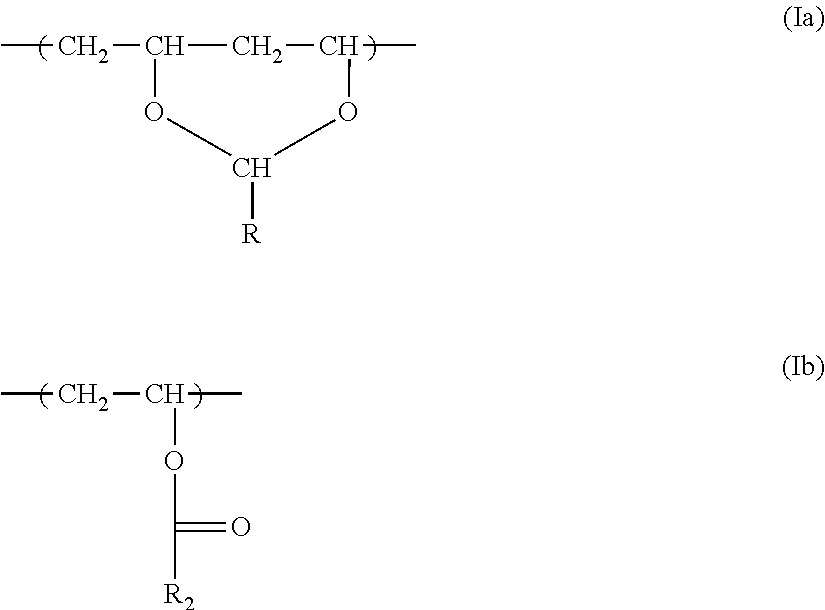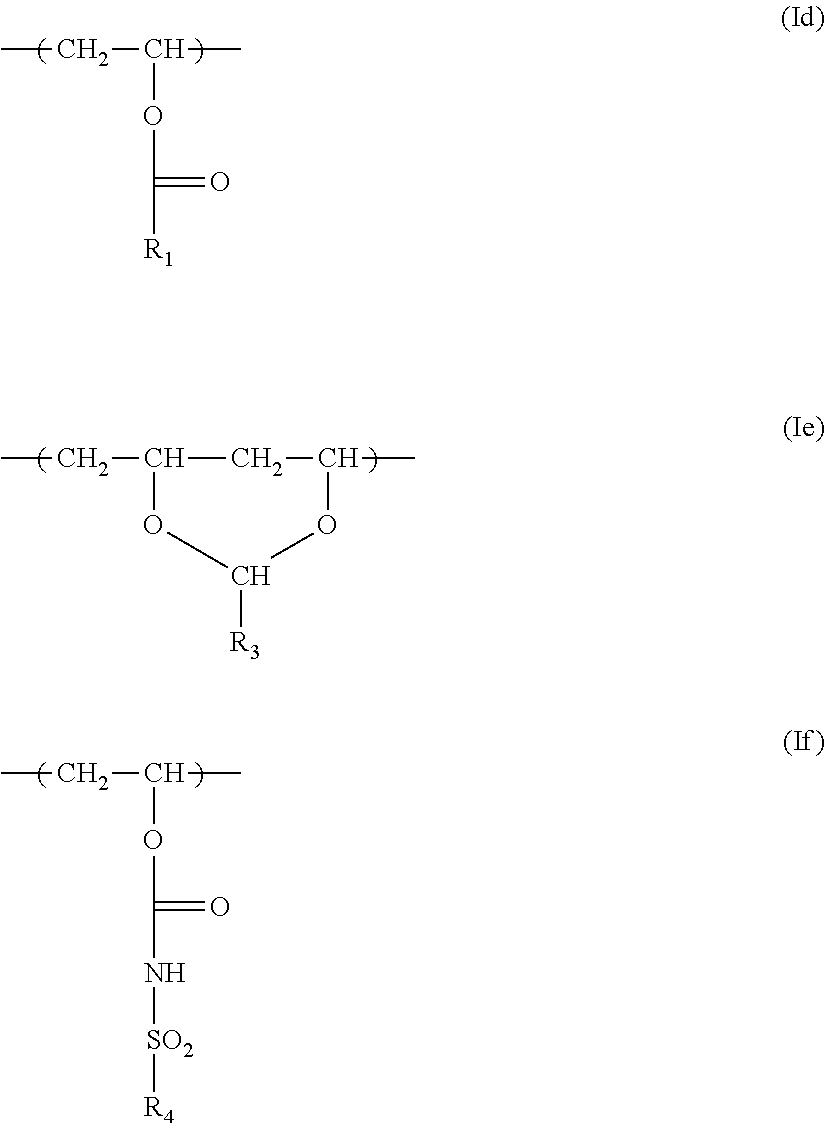Method for making lithographic printing plates
a printing plate and lithographic technology, applied in the field of lithographic printing plate making, can solve the problems of difficult removal of crusted silicon dioxide during maintenance operations, carbon dioxide from the air neutralizing the silicate, and the silicate-containing processing solution becomes “dirty” with sludge, so as to improve the resistance to pressroom chemicals, reduce sludge and silicon dioxide crusting, and improve the effect of resistan
- Summary
- Abstract
- Description
- Claims
- Application Information
AI Technical Summary
Benefits of technology
Problems solved by technology
Method used
Image
Examples
embodiment 1
[0173]2. The method of embodiment 1, wherein the second resin is a phenolic polyvinyl acetal resin.
[0174]3. The method of embodiment 1 or 2, wherein the second ink receptive layer further comprises thermally inert inorganic particles that are present in an amount of at least 2 weight % and up to and including 20 weight %, based on the total dry weight of the second ink receptive layer, which thermally inert inorganic particles have an average particle size of at least 0.5 nm and up to and including 500 nm.
[0175]4. The method of any of embodiments 1 to 3, wherein the second ink receptive layer further comprises thermally inert organic polymer particles that are present in an amount of at least 0.1 weight % and up to and including 5 weight %, based on the total dry weight of the second ink receptive layer, which thermally inert organic polymer particles have an average particle size in μm that is at least 1.5 times average dry coating weight of the second ink receptive layer in g / m2.
[...
embodiment 5
[0178]6. The method of embodiment 5, wherein the poly(vinyl phosphonic acid) interlayer has been derived by treating the grained and anodized aluminum-containing substrate with a solution comprising poly(vinyl phosphonic acid) and phosphoric acid.
[0179]7. The method of any of embodiments 1 to 6, wherein the infrared radiation absorber is present only in the second ink receptive layer.
[0180]8. The method of any of embodiments 1 to 7, wherein the second ink receptive layer further comprises a third water-insoluble, alkali-soluble or -dispersible resin that comprises a polysiloxane unit segment in a polyurethane or polyurethane urea backbone or side chain.
[0181]9. The method of any of embodiments 1 to 8, wherein the processing solution comprises at least 0.0001 gram-atom / kg of a metal cation M2+ selected from the group consisting of barium, calcium, strontium, and zinc cations.
[0182]10. The method of any of embodiments 1 to 9, wherein the metal cation M2+ is present in the processing s...
embodiment 12
[0185]13. The method of embodiment 12, wherein the processing solution comprises 2-phosphonobutane-1,2,4-tricarboxylic acid.
[0186]14. The method of any of embodiments 1 to 13, wherein the processing solution comprises an alkali metal hydroxide as an alkali agent.
[0187]15. The method of any of embodiments 1 to 14, wherein the processing solution comprises a cationic surfactant.
[0188]16. The method of any of embodiments 1 to 15, wherein the processing solution comprises one or more quaternary ammonium salts or one or more phosphonium salts.
[0189]17. The method of any of embodiments 1 to 16, wherein the processing solution has a pH of at least 12.5 and up to and including 14, calcium or strontium metal cations, a sodium or potassium hydroxide, 2-phosphonobutane-1,2,4-tricarboxylic acid, and a cationic surfactant.
[0190]18. The method of any of embodiments 1 to 17, further comprising baking the lithographic printing plate after the processing.
PUM
 Login to View More
Login to View More Abstract
Description
Claims
Application Information
 Login to View More
Login to View More - R&D
- Intellectual Property
- Life Sciences
- Materials
- Tech Scout
- Unparalleled Data Quality
- Higher Quality Content
- 60% Fewer Hallucinations
Browse by: Latest US Patents, China's latest patents, Technical Efficacy Thesaurus, Application Domain, Technology Topic, Popular Technical Reports.
© 2025 PatSnap. All rights reserved.Legal|Privacy policy|Modern Slavery Act Transparency Statement|Sitemap|About US| Contact US: help@patsnap.com



